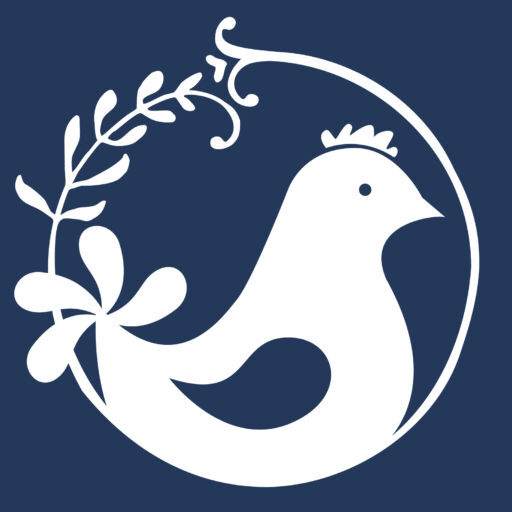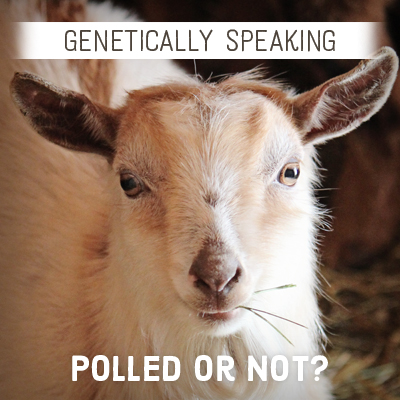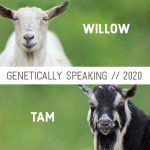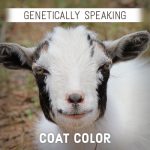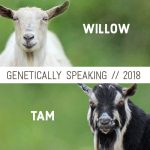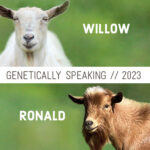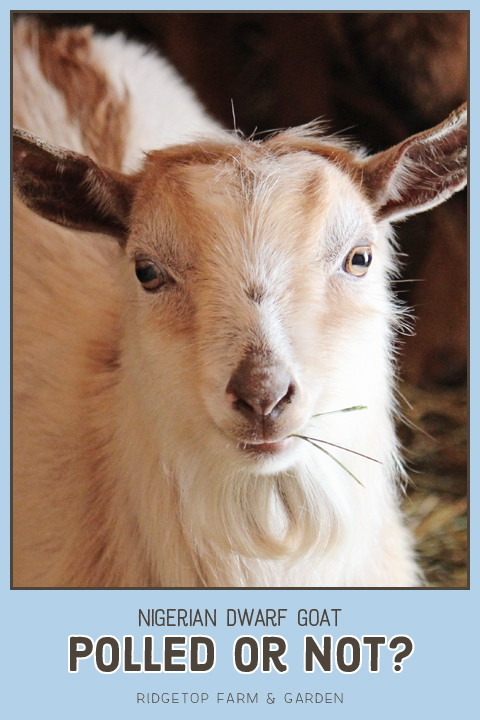
Polled animals are animals born naturally without horns. Some breeds of cattle are entirely polled. There are not any goat breeds entirely polled.
In goats, the polled gene is dominant. This means that a kid can only be polled if one, or both, parents are polled.
Every goat receives two genes of each characteristic (in this case being polled), one from mom and one from dad. Although, only one of the genes will be expressed. If mom or dad have the dominant trait, that will be the one expressed. If neither mom or dad have the dominant trait, neither will their kids.
Since disbudding is not enjoyable for the kid or the person doing the disbudding, being polled is a desirable characteristic for some breeders.
Others believe being polled is a genetic flaw and therefore choose not to breed the trait.
Either way, polled goats are not the norm. Research done long ago showed breeding a polled doe to a polled buck resulted in a higher frequency of the kid being intersex. The research is debatable, but most breeders today still choose not to breed polled to polled.
POLLED PROBABILITY
To help visualize the probability of polled vs. horns in a breeding pair, examine the Punnet squares below.
• The dam has two genes for the polled/horned characteristic – one from each of her parents. The two genes are known and represented in the rectangles.
• The sire has two genes for the polled/horned characteristic – one from each of his parents. The two genes are known and represented in the rectangles.
• The kid will also have two genes for the polled/horned characteristic – one from each of his parents. The possible options are displayed in the squares.
P = polled
p = horned
Since being polled is a dominant trait, if a P is shown in a square the goat will be polled. If a P is not present, the goat will have horns.
The sire and dam each have two polled/not polled genes, but each pass only one to the kid. The two letters represent the one gene from the dam and the one gene from the sire that were passed to the kid.
The possible results are:
PP = HOMOZYGOUS POLLED. This would result in a polled goat that does not carry the horn gene. This is rare in goat herds.
Pp = HETEROZYGOUS POLLED. This would result in a polled goat that carries the recessive horn gene. Most polled goats are heterozygous.
pp = HOMOZYGOUS HORNED. This would result in a horned goat, with no possibility of being polled. Even though horns are recessive, this is the most common outcome in goats.
PUNNET SQUARE 1
Here we have a heterozygous polled goat (Pp) bred to a homozygous horned goat(pp).
The probability of a kid being polled is 50/50.
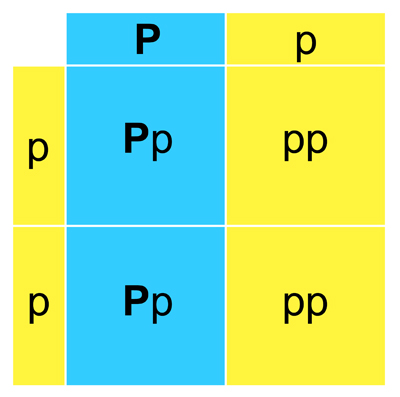
PUNNET SQUARE 2
This Punnet square shows a homozygous horned goat(pp) bred to another homozygous horned goat(pp).
The probability of a kid being polled is 0.
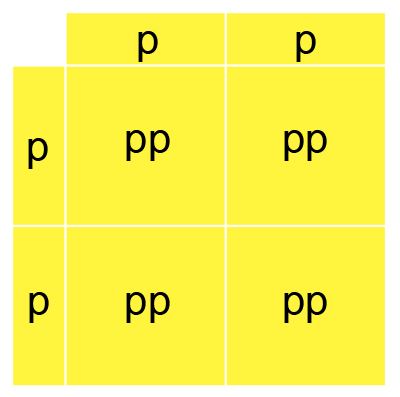
PUNNET SQUARES 3-6
These four options are possible, but not likely since most goats are not homozygous polled or bred to another polled goat.
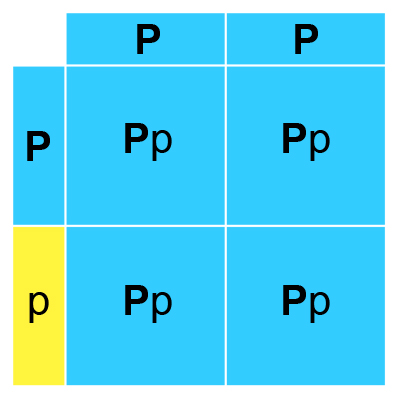
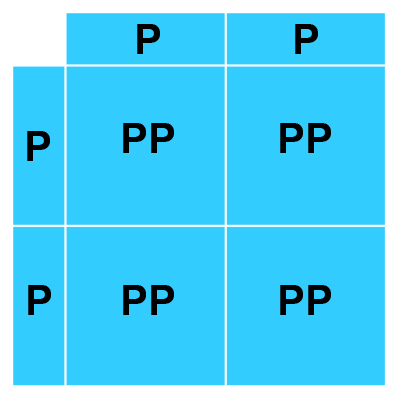
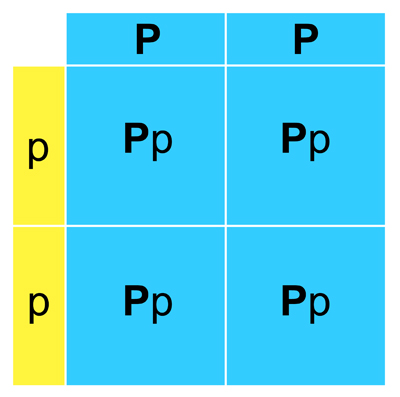
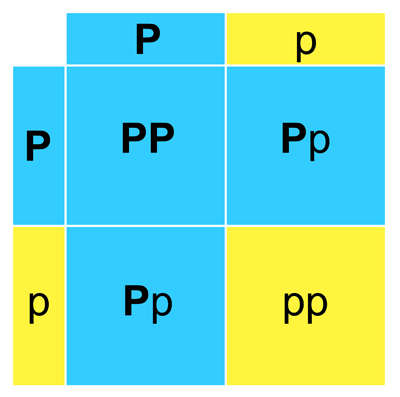
HOW TO KNOW IF A NEWBORN KID IS POLLED
It can be tricky to tell if a newborn kid is polled. It is important to know for sure, though, because you wouldn’t want to disbud an animal that doesn’t need it.
As newborns, most horned kids will have hair swirls where their horns will be.
Polled kids will generally have bumps where horns would be. But, the bumps feel more round and less pointy than horns poking through. Also, if the skin moves a bit at the bump, the goat is probably polled. Skin around incoming horns does not move.
This is our goat, Wingman. He is polled. It is a bit deceiving because the hair where horns would be is noticeably different. However, the hair is more like a cow lick than a swirl.
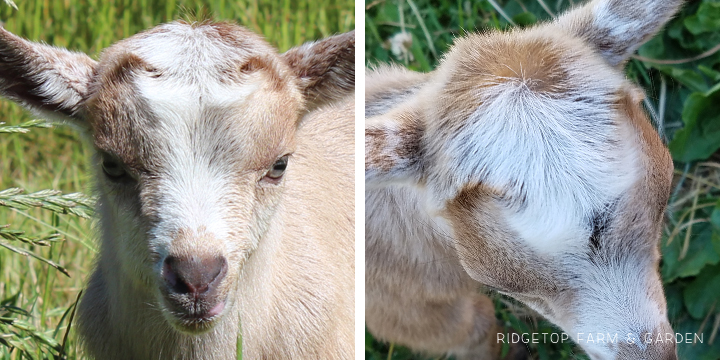
OUR POLLED GOATS
Willow
She actually had the disbudding process done to her, but is polled. She has produced many polled babies with horned sires.
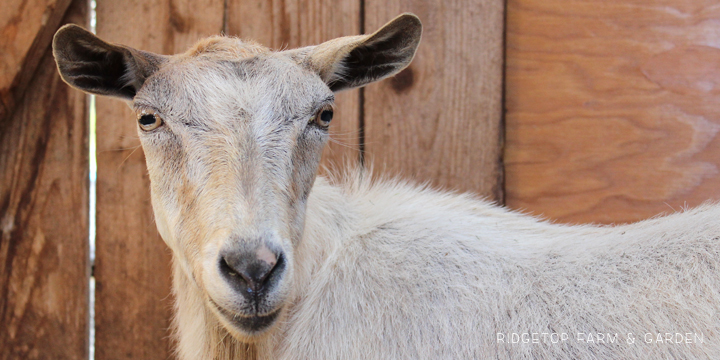
Willow’s buck from 2017, Wingman
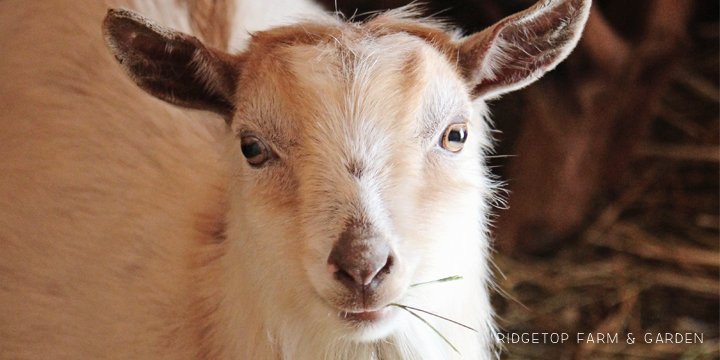
Willow’s buck from 2018
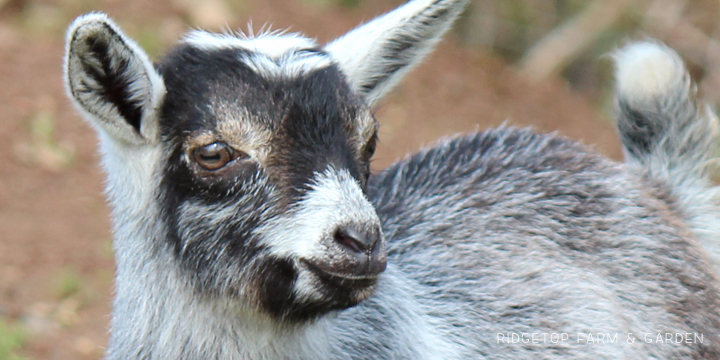
SCURS
Scurs, in goats, are the result of the animal not being disbudded properly. Disbudding needs to kill all the horn tissue. When not all the tissue has been killed, scurs can occur. Scurs generally show up as wonky bits of a horn.
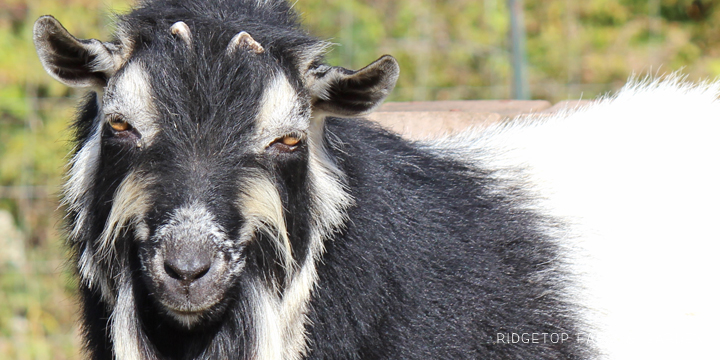
Science is Fun & Genetics are Fascinating!
